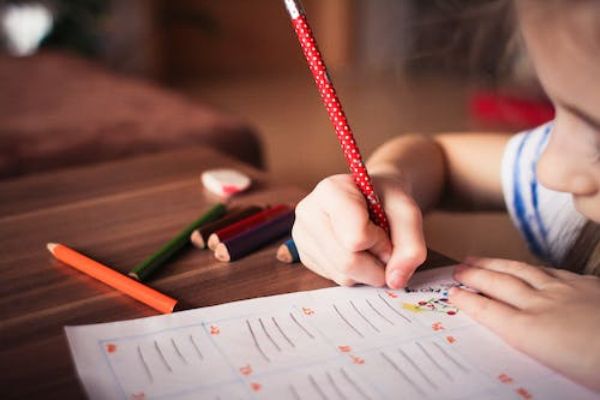Wuyue town - Fengjing, is located in the southwest of Shanghai, a country with 1,500 years of history, Shanghai's only national historical and cultural town, "small bridge, flowing water, they" typical southern water town, street and building Linhe residents River and sleep pillows. Fengjing town of immense cultural, and spiritual人杰, is full of talents, there are modern, vice chairman of the National People's Congress Zhu Xuefan,丁聪cartoonist, traditional Chinese painting master Cheng Shifa, Go team, such as Gu water. Jin Feng rice wine, small hoof Fengjing, top cakes, tofu four native products are known as "Sibao Fengjing." Peasant paintings, cartoons丁聪, Cheng Shifa's traditional Chinese painting and water, such as the Go Board, called at home and abroad have a considerable impact on the "three paintings of a game." Fengjing The main attractions are: ancestral home of Cheng Shifa,丁聪comic gallery, 300 Park, the people's commune site, workshops and other small hoof.
City Beach is located in Jinshan District of Shanghai, is located in the southwest of Shanghai, the north shore of Hangzhou Bay. West and the Zhejiang Pinghu, Jiashan City, adjacent to the east Fengxian District, south of Hangzhou Bay, north of Qingpu District and Songjiang District.

"City Beach" is the top priority of the development and construction of the coastline is the most the Yangtze River Delta cities of Shanghai-style coastal landscape. Wai water area of 1.5 square kilometers. Water to deal with physical sedimentation and biological degradation, artificial waves, the natural cycle of things, with the rain water collection systems on land and water animals and plants chain, while the scientific transformation of the beach, clear water to create Sands coastline of the urban landscape. Artificial laying golden sand and clear water相映成趣, leaned forward to the beach is the promenade has been built landscape. Above the promenade is a wave-shaped roof and white, when both sides of the lights at night lights up the whole, the entire gallery as a long roll with a pearl,煞是pretty choppy.
Bridge view Bihai Sands, oncoming sea breeze, which belongs to the Fiat had been in Hawaii and never belong to Shanghai. In a series of events held here, such as "Beach Volleyball World Tour," "Summer Wind Music Season", and so on, has become a resounding Chinshan card coastline.
East temple is located in Jinshan District of Shanghai朱泾镇No. 150 East Street, Tai Yuan was founded in the first year (1308), formerly known as Kannon. Qing Emperor two years (1313), the change was Donglin Temple. The wind and rain in 700 years, the repeated兵燹, fire and dilapidated and destroyed and rebuilt several times reconstruction. In 1987, the east hall of a temple there was the Shanghai Municipal People's Government as a municipal heritage conservation units. In November 2002, the management of religious affairs Jinshan ratifying, formally registered as a Buddhist activities. Government in 2004 to implement the Party's religious policy, free allocation of the original 20.5 acre compound Jinshan county government as the East Temple and West Temple Monastery One of the expansion of the two sites, and in September 2007 in order to reproduce the characteristics of the Qiao Yuan Temple displayed in front of the vast numbers of pilgrims and visitors.
Temple of the East now is a dazzling spectacle of the mountain - the Buddha is a mountain lying on a Buddha. 57 meters high mountain that is the Buddha, is佛即mountain one Buddha, Foshan stretch. Achieve the "although well-made, like Tiankai" depicted.
Jinshan peasant paintings based on the rural southern landscape or rural segments of life, the idea of new, pristine image, composition is simple and colorful, full of modern rural life, was highly infectious and appreciation of nature. In recent years, Jinshan peasant paintings frequently go out of the country in the United States, Britain, Japan, France and other 17 countries on display, as the "world of folk art treasures
上海著名景点介绍
因为这个地方有非常多外国人在这里聚集,在这里购物参观,所以说这里到处都是英文的招牌,是上海最洋气的地方。这个地方就是上海的新天地,这里是一个非常具有老上海风情的地方,是几条老的街道组成的一个商业中心。上海的新天地在没有改造之前,就是那种非常破破烂烂的建筑群,因为年久失修没有人加以修缮,所以说非常的破烂,不符合上海这座城市的气质。后来经过政府对这个地区进行重新的规划,重新的设计,重新的修缮,这里变成了一个融汇东方文化以及中国传统建筑的一个建筑群,是具有中西合璧风格的一个商业街。

所以这种古老和现代、东方和西方文明文化相互交融的一个地方,就吸引了非常多的游人前来这里参观前来这里购物。这些游客中很多都是外国人,这里也成了外国人来上海必大看的一个景点之一,所以这里很多的商家就写起挂上了英文的招牌来,吸引更多的外国的游客来这里进行消费。上海新天地是上海对传统建筑进行改造的一个非常成功的范例,融合了很多种文化的一种全新的建筑模式,赢得了非常多人的喜欢。人们到这里来,不仅仅是为了购物,不仅仅是为了体验这里的独特的小吃,更多的是来体验这里的风土人情,这里的老上海的文化。我觉得到一个地方旅行,我们不仅要吃一些东西,更多的要看一些东西,去体验这里深厚的历史文化和文明,在这里交织融汇后的一种震撼,一种心灵的洗涤。
Jing'an Temple (Chinese: 静安寺; pinyin: Jìng'ānsì; literally "Temple of Peace and Tranquility") is a Buddhist temple on West Nanjing Road, in Jing'an District, Shanghai, China.
The first temple was built in 247 AD, at the time of the Kingdom of Wu, during the Three Kingdoms period. Originally located beside Suzhou Creek, it was relocated to its current site in 1216 during the Song Dynasty. The current temple was rebuilt in the Qing Dynasty. During the Cultural Revolution, it was converted into a plastics factory. It was converted back to an active temple following reconstruction in 1983, and completely renovated in late 2003.
The Longhua Temple (Chinese: 龙华寺; pinyin: Lónghúa Sì, literally "Lustre of the Dragon Temple") is a Buddhist Temple dedicated to the Maitreya Buddha in Shanghai Municipality, China. Although most of the present-day buildings date from later reconstructions, the temple preserves the architectural design of a Song Dynasty monastery of the Buddhist Chan sect. It is the largest, most authentic and complete ancient temple complex in the city of Shanghai.

鲁迅公园,原称虹口公园,位于上海东江湾路146号。清光绪二十二年(1896年),上海公共租界工部局在界外的北四川路底购得农田237.288亩,在此圈地筹建万国商团打靶场,由英国园艺设计师,根据英国格拉斯哥体育公园模式,建成“虹口娱乐场”。1905年改建为虹口体育游戏场和打靶场。1922年改名为“虹口公园”。
虹口公园开了上海乃至中国现代体育运动的风气之先。作为大型综合性体育公园,园内共有1个九孔高尔夫球场,75片草地网球场,8片硬地网球场,3片足球场,5片草地滚球场,还有曲棍球篮球、棒球、田径等场地。根据工部局统计,民国24年(1935年),租界外侨总共才3.8万人,而仅在虹口公园一处直接参加体育活动的就达86103人次,在虹口公园打高尔夫还要排队。
共青森林公园(GongQing Forest Park)位于上海市东北部杨浦区军工路2000号,东面濒临黄浦江。共青森林公园原名共青苗圃,1986年更名为共青森林公园。公园总占地面积为1965亩,其中对外开放的绿地面积1870.6亩。
共青森林公园是以森林为主要景观的特色公园,共种植200余种树木,总数达30多万株。公园分为南北两园,北园占地1631亩称为共青森林公园,南园占地239.6亩称为万竹园。南北园风格各异,北园着重森林景色,有丘陵湖泊草地,南园则小桥流水一派南国风光。除观景之外,游人也可在园内骑马,烧烤和垂钓,成为节假日旅游的好去处。
公园本来是黄浦江边的滩涂沼泽,1956年上海市政府疏浚河道开垦荒地后辟为苗圃,1958年当时的团中央书记胡耀邦同志也曾带领青年支援者在此植树造林。
免责声明:本平台仅供信息发布交流之途,请谨慎判断信息真伪。如遇虚假诈骗信息,请立即举报
举报